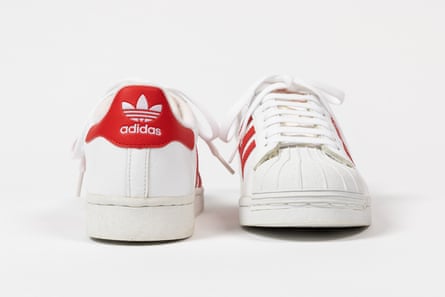From Professor X’s hat to Spike Lee merch and the Thom Browne dress Doja Cat wore on the red carpet in 2022, Fresh, Fly, and Fabulous, a new exhibition at New York’s Museum at FIT, traces the history of hip-hop style across 50 years. Elizabeth Way and Elena Romero, the event’s curators, talk through the importance of eight items – including one from Romero’s own archive – that changed fashion.
Shell Toes
Sneakers were central to the hip-hop look from the start – Romero says people wore a range of brands such as Adidas, Converse and suede Pumas. Adidas Shell Toes were a favourite of Run-DMC, who wore them without laces. The group loved the shoes so much that they released the song My Adidas in 1986. Their appreciation of the shoes was shared by their fans. “They sang it [at a concert] and everyone put their sneaker up in the air. That is really an iconic moment in hip-hop,” says Way. “Adidas saw a huge uptick in sales; they sent a marketing person to New York to figure it out. And he ended up at this concert.”
Collaborations between hip-hop artists and brands today are commonplace, but this was the first of its kind. “It led to the multimillion-dollar endorsement, which was the first time that a hip-hop group had signed a deal like that,” says Romero. “It’s much later that hip-hop becomes a business. This was organic.”
Bucket hat
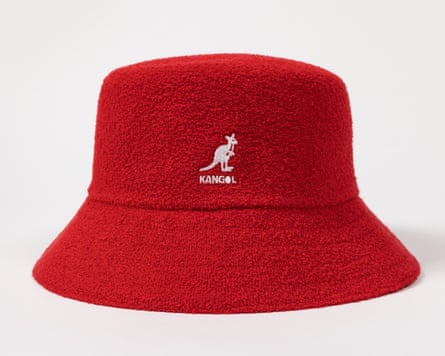
The bucket hat dates back to farming communities and was worn on the TV show Gilligan’s Island in the 60s. Its association with hip-hop dates to the late 70s. In the 80s, LL Cool J and Run DMC wore Kangol hats. Way says the preference for the British brand is just one example of “cross pollination”: “We see a lot of European influences.”
Romero adds that the bucket hat often completed a look: “It is part of what we call the ‘hookup’, where you wear a brand or colour head to toe.”
“We see this in communities of colour consistently,” she adds. “It’s an ode to their parents and older generations wearing a hat. These are intergenerational ideas of what it meant to be stylish.”
Jordache jeans
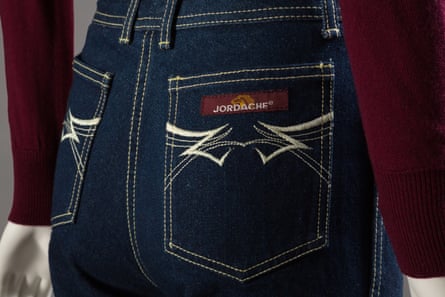
In the early 80s, the designer jean market was exploding with brands ranging from Gloria Vanderbilt to Calvin Klein. Labels such as Jordache, Calvin Klein and Lee were popular in the hip-hop community. Jordache represented “a lot of things – funk and disco, even salsa”, says Way. “So a lot of musical references, again, back to their parents and what their parents did, their older siblings or cousins.”
Romero – who was part of the hip-hop scene growing up in Sunset Park in Brooklyn – says Lee was a particular favourite. “Young men would cut out the patches and collect them as a way of bragging rights,” she says. “It would be like a baseball card collection. We wore a lot of colourful jeans. It wasn’t just indigo, it was grey and maroon and in hunter green and black.”
MCM jacket
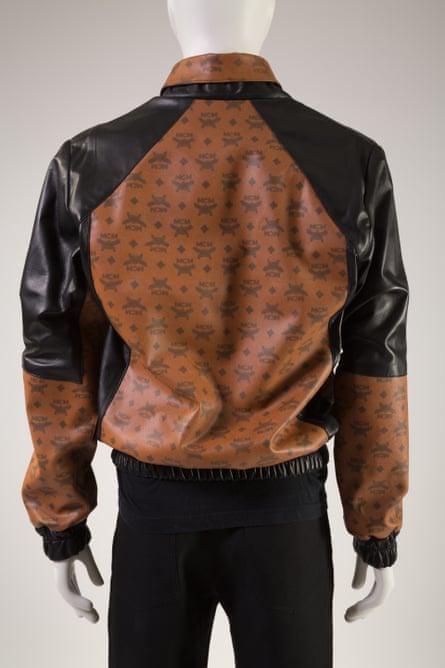
The designer Dapper Dan opened his store in 1982 and his designs – bootlegs that spliced Fendi, Louis Vuitton and MCM logos on sportswear – became popular. While this item isn’t made by Dapper Dan, it shows his influence. “He was printing his own leathers and really pioneering this dialogue between a European brands and American sportswear,” says Way. “Other practitioners worked on a small scale, creating their own custom fashions.”
While Dan’s designs were bootlegs, they represented luxury to his clientele. “For them, this was custom. This was one of the one, a unique piece only they had – it was the most desired,” says Romero. “All [Dapper Dan’s] clientele were hustlers and gangsters, people that hip-hop personas emulated and wanted to dress and look like.” While Dan’s success eventually led to legal action from luxury brands, he has recently gone full circle. After his work finally received the recognition from the fashion industry it deserved, he collaborated with Gucci in 2017 and reopened his atelier, with the company’s backing, in 2018.
Sean John outfit
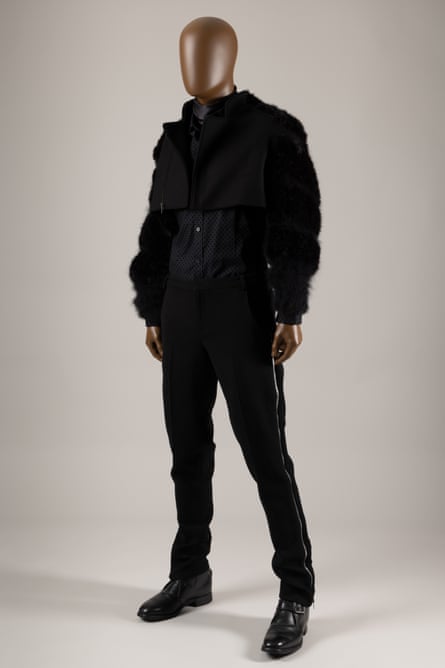
The exhibition also covers hip-hop’s relationship to the fashion industry. This includes pieces such as a 1991 Chanel chain, which uses the aesthetic of the “Dookie” chain, and designs from brands including Baby Phat, 5001 Flavors and Sean John, the label founded by Diddy in 1998. Sean John marked a turning point, says Way. “It really merged with mainstream fashion from the beginning. The brand was supported by Anna Wintour and André Leon Talley. And [Diddy] was the first Black designer to win a CFDA award.” Crucially, as this outfit testifies, Sean John didn’t adhere to cliches. “This is not a typical quote-unquote hip-hop look,” says Way. “One of the things that Sean John did was to elevate hip-hop style to not only represent denim and jeans.”
Elena belt
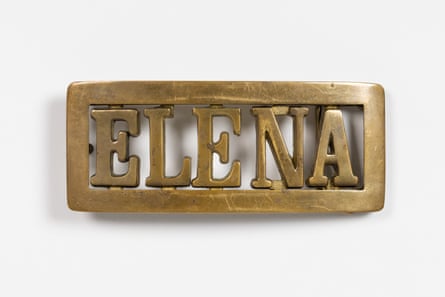
Romero contributed her own name belt to the exhibition – an example of a trend for wearing your name on accessories in the early 80s. “There were these small mom-and-pop stores throughout the different boroughs,” she says. “You would tell them how many letters, with either your name, your horoscope, your crew, and then have them customised.”
The curator says this was more than a fad. “Shouting out your name was a way of being seen. Black and brown people from marginalised communities here in New York City and around the world were being othered and they wanted to be seen. What better way than flaunting your name through your clothes, through your jewelry?”
Earrings
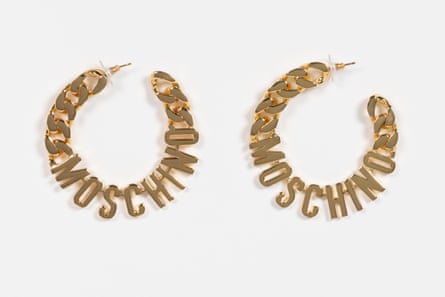
Hoop earrings are synonymous with hip-hop style – worn by everyone from Salt-N-Pepa to Lil Kim and Cardi B. Way says this is another item with roots in wider Black culture. “We see a lot of figures like Betty Shabazz, Angela Davis, wearing hoops, and we see that continue with women in hip-hop.”
“A lot of it is paying homage to our mothers, our aunties, the baby boomers of the civil rights movement,” adds Romero.
Earrings were also an early way for women in the hip-hop world to put their own mark on the look. “So much of early hip-hop style for women was androgynous,” says Way. “They wanted to dress like boys to be respected when they danced but jewellery, nails, makeup, hair – these were ways that they could infuse their own feminine style.”
Cazals
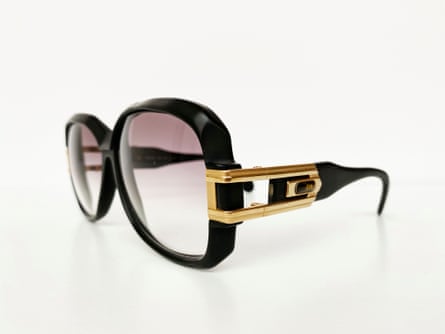
Images taken by the photographer Jamel Shabazz in the early 80s are featured in the exhibition. Documenting young people in the hip-hop scene in Brooklyn, the images showcase the large-lensed Cazal glasses now so associated with this era. Romero says they were a status symbol and could be seen as an early example of geek chic. “Glasses have not always had the best responses from young kids,” she remembers. “But now, all of a sudden, the very thing that people kind of hated was chic and popular.” They were the finishing touch on a kind of uniform: “You’d wear them with the bucket hat, the shearling, the Shell Toes or Converse.”
-
Fresh, Fly, and Fabulous: Fifty Years of Hip Hop Style is at the Museum at FIT in New York from 8 February to 23 April

